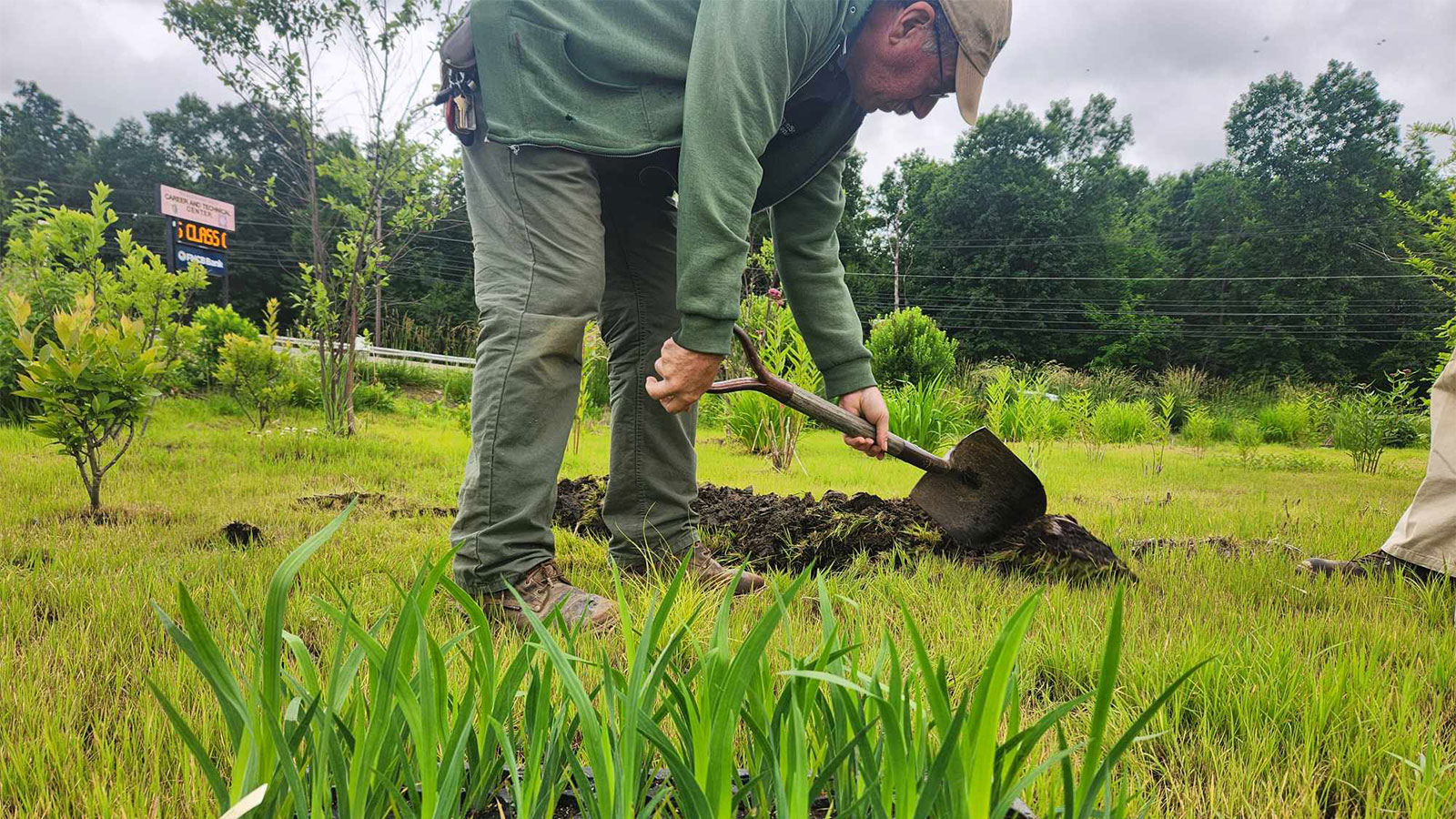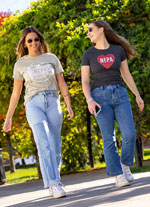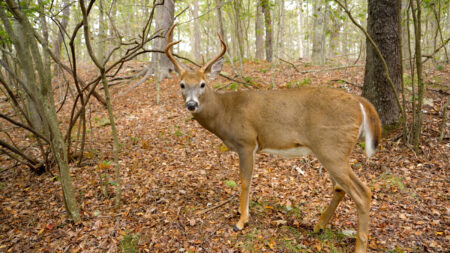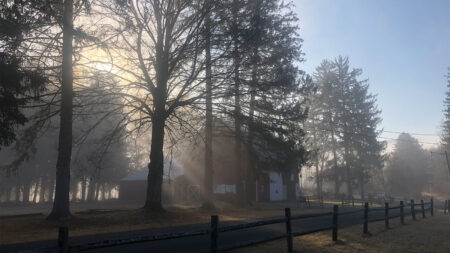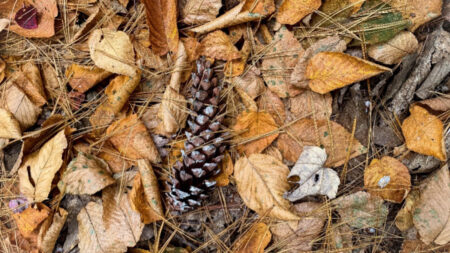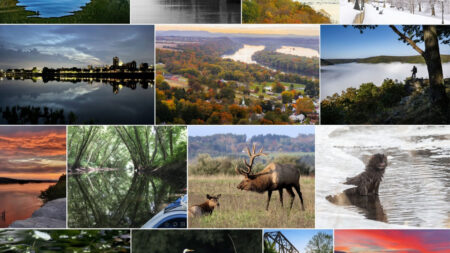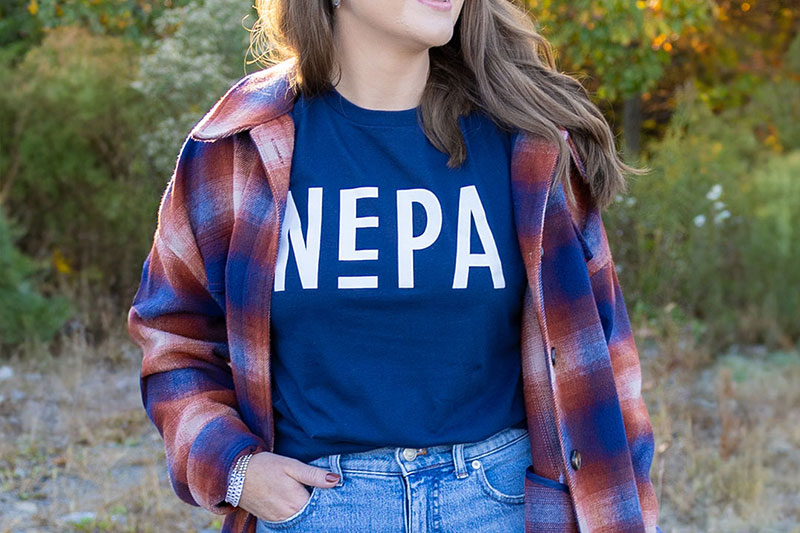DiscoverNEPA is partnering with Pennsylvania Environmental Council, a nonprofit that protects and restores the natural and built environments to improve the quality of life for all Pennsylvanians. Keep an eye on this series for updates on PEC projects, volunteer opportunities, Tail on the Trail activities and so much more.
Learn how to do your part to help keep NEPA’s rivers and streams clean.
Nothing beats a July storm – the cool, misty breeze signaling relief from a hot, humid day, the color change on the mountain as the sun competes with the dark clouds, and the roar of rain as it soaks the valley – a common occurrence here in Northeastern Pennsylvania. The freshwater dumped during these summer storms flows from storm drains into rivers and streams, thus playing a powerful role in the health of these aquatic ecosystems.

As the water flows over non-absorbent surfaces like streets, parking lots, and roofs, pollutants are picked up that pose a major threat to these systems. Fortunately, several positive intervention projects have been implemented in the Wyoming Valley, and there’s more that you can do to keep our rivers and streams healthy. We’ve teamed up with the Clean Water Advisory Committee to tell you all about these projects.
Native Rain Gardens
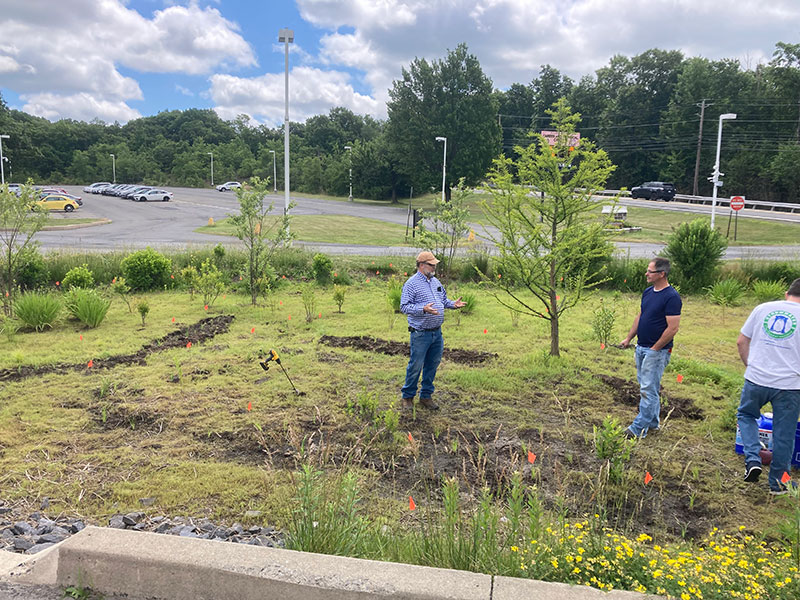
One of the greatest sources of pollution during a rain event comes from parking lots and roadways.
These paved surfaces prevent water from soaking into the ground and forces it to flow into nearby lakes and streams, bringing with it heavy metals, carbons, oil and grease, and other substances that leech from cars and businesses. Storm drains capture and direct the water into our rivers and streams, but do not treat and clean the water before it is released back into the ecosystem. Rain Gardens help to relieve some of that pressure on these built systems by slowing and capturing runoff and pollution.
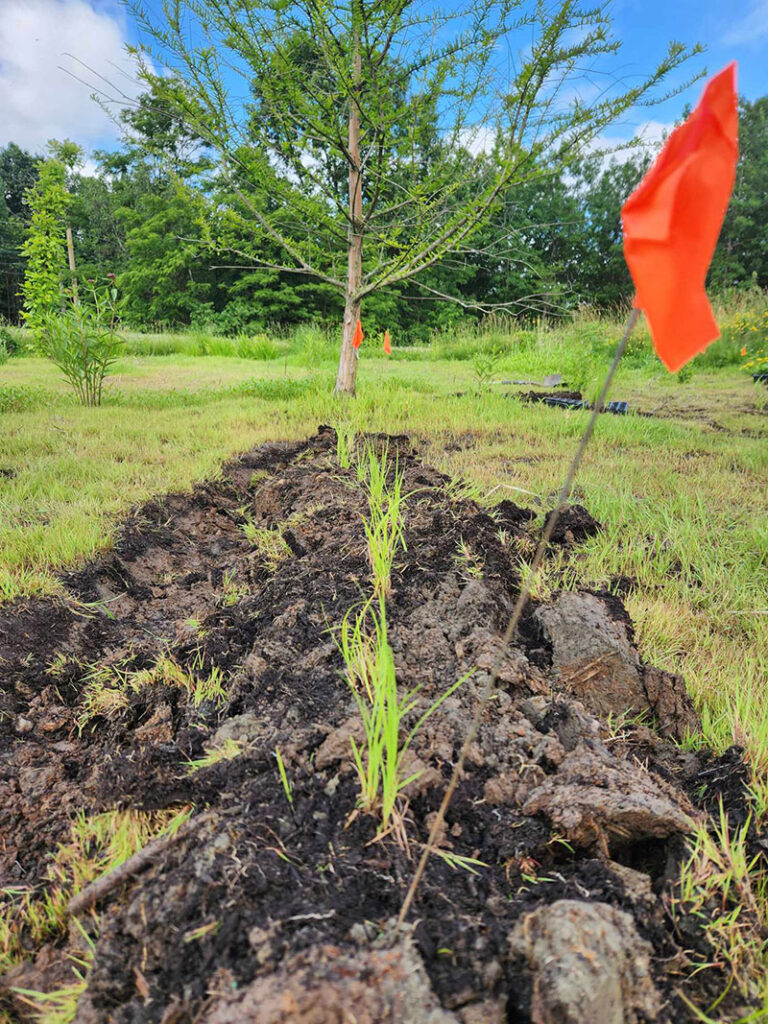
Rain gardens are planted along roadways, walkways, and parking lots to help naturally absorb rain runoff into the soil and promote native vegetation growth. The garden is planted in a depression to encourage the water to flood the vegetated area rather than pool on the roadway. WVSA has several rain gardens throughout the Wyoming Valley and we recently joined them and the Penn State Extension Master Gardener team to plant new native species in an existing rain garden at Wilkes-Barre CTC. Swamp Milkweed, Blue Flag Iris, and Cardinal Flower were just a few of the species already thriving in the garden, all of which are resistant to heavy rains, great for filtering toxins out of soil, and serve as a great food source for native pollinators like butterflies, birds, and bees.
Rain Barrels
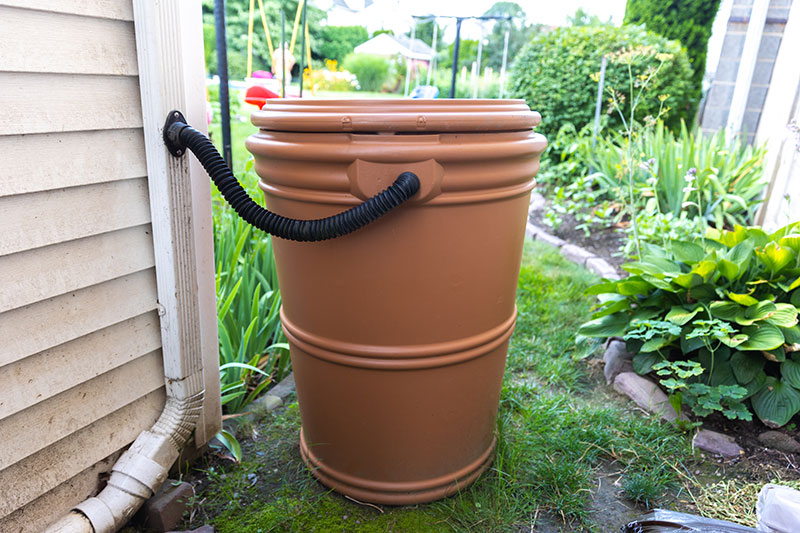
Another source of pollution during a rain event is the roof of your home.
Roofing materials like shingles can release pollutants overtime as they corrode, and polluted air can cause chemicals like sulfur, chlorine, and ammonia to settle on your roof. During a rain event, these pollutants can be intercepted and the water put to good use – just install a rain barrel! Rain Barrels are large containers that can be hooked up to your downspout to collect water during a rain event. This water can then be used to water your lawn, garden, or indoor plants!
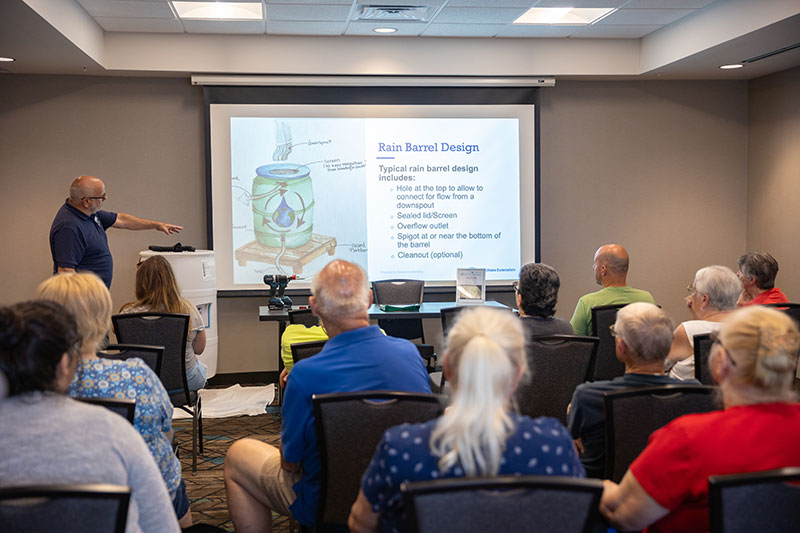
At the beginning of June, WVSA hosted a rain barrel workshop in partnership with Penn State Extension Master Watershed Stewards. The event drew nearly 80 people from the Wyoming Valley to Wilkes Barre to learn about proper installation and use of a rain barrel. Participants even got to leave with a free rain barrel to use on their property, and some where eligible for a WVSA stormwater discount upon inspection. These events are usually held annually in early June, keep an eye out for more details in Spring 2025!
Clean Ups
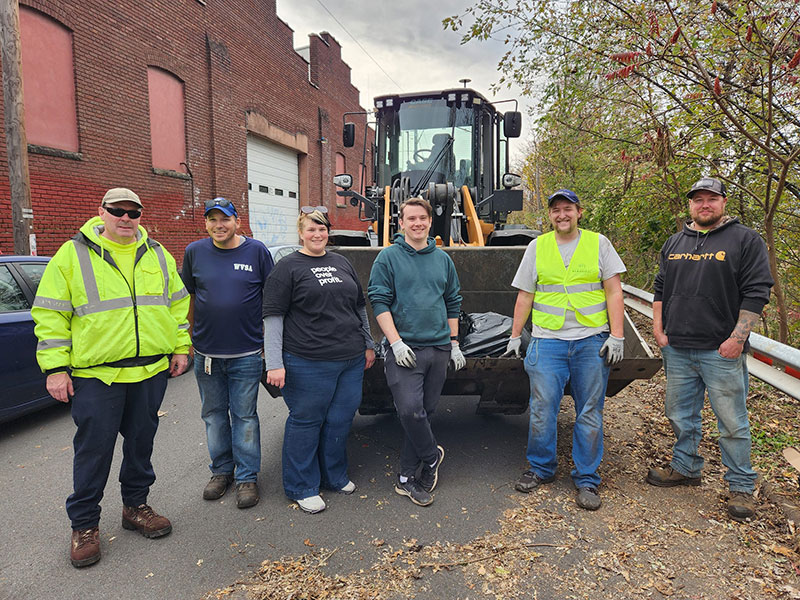
Keeping NEPA Beautiful.
According to the EPA, most of the garbage that ends up in waterways comes from land based activities, which means that most of this trash within proximity of a waterway will likely end up there after a wind or rain event. That is why the Clean Water Advisory Committee was eager to team up with Keep Northeastern PA Beautiful to conduct cleanups throughout the Wyoming Valley.

The first event took place on Arch St in Wilkes-Barre, where participants removed nearly 8,000 pounds of trash from an embankment near Solomon Creek. WVSA also incentivizes participants of their cleanup events by awarding a stormwater discount to a nonprofit of their choosing based on the number of hours they volunteered. Their next cleanup is tentatively scheduled for November 2nd, keep an eye on Keep NEPA Beautiful’s Facebook page for more details!
WVSA Clean Water Advisory Committee
The Clean Water Advisory Committee is comprised of select local members representing businesses, institutions, county, non-governmental organizations, and other stakeholders in the Wyoming Valley. The goal is to relay citizen and stakeholder feedback, concerns, and recommendations to Wyoming Valley Sanitary Authority’s Stormwater Management Division, which oversees the Regional Stormwater Management Program.

